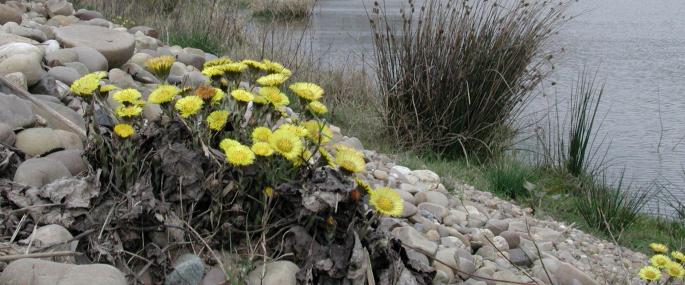A common and creeping perennial of bare, damp or disturbed ground, Colt's-foot can be found on waste ground, field edges and roadside verges. The sun-yellow flower heads appear as early as February, and well before the hoof-shaped leaves (hence the common name). Colt's-foot continues to brighten up rough ground until April.
Some of our most abundant species are often treated as 'weeds' when they appear in the garden. Yet they can be extremely beneficial to wildlife, providing food for nectar-loving insects and shelter for minibeasts. Try leaving wilder areas in your garden and see who comes to visit... To find out more about wildlife-friendly gardening, visit our Wild About Gardens website: a joint initiative with the RHS, there's plenty of facts and tips to get you started.
